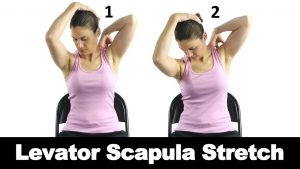Do you get ‘cold weather shoulder’? I do every winter, probably because I spend a lot of time outdoors. About this time of year, as the weather gets colder, we see a lot of people whose usually manageable neck and shoulder pain has become more noticeable, or even unbearable. I like to call this the ‘cold weather shoulder’. In this post, we look at some possible causes and what you can do to prevent or alleviate it.
Most people walk around with a certain level of tension in their neck and shoulders. There are many ways in which our posture is compromised in such a way that we overuse or strain those muscles. Your ‘cold weather shoulder’ could be due to desk work, carrying heavy bags or lifting children. Often it only takes one extra aggravating factor to set off a pain signal (or in some cases a spasm). This restricts our ability to turn our head from side to side – in this case, cold weather.
Applying heat or cold to the neck is one of the easiest ways to change our whole body temperature. As the weather gets cold, you may without realising it, alter your posture to try and protect your neck from the cold. This usually means lowering your head further forward and lifting up your shoulders, placing further strain on your neck and shoulder muscles.
How can you avoid ‘cold weather shoulder’?
Number one, wear a polo neck or warm scarf. When you keep your neck warm with a scarf (or similar winter wear) it’s much easier to keep your posture in a better position in the face of a chilly winter day. You’ll then be able to drop your shoulders and lengthen your neck comfortably. Of course it will take some time to break the habit of hunching over in the cold weather, however you will find it easier to do if your neck is warm. Whenever you remember, check your posture when you’re outside to make sure you’re not lifting your shoulders up and sticking your chin out. If you carry a bag or a rucksack, think of it as pulling your shoulders back and down, encouraging a better posture.
While we all know we should have perfect posture all the time, it’s not always practicable. As you work to improve your posture, try these stretches that should help relieve some muscle tension caused by poor posture. Remember you should check with a health professional before starting any new regime if you have any pre-existing problems in your neck and shoulders.
Chest Stretch
Most of us have a tight chest that pulls our neck and shoulders forward, so to make it easier to hold open and drop your shoulders, stretch out your chest. If you have seen me before for neck and shoulder tension, you probably know this one, but if not, here’s a recap:

1) Find a corner of the room. Put your arms out at a 90 degree angle from your chest, with your body in line with your hand.
2) Keep your shoulder down and chest aligned. Gently lean forward to find a slight stretch in your chest. If you feel it in the back of your shoulder, take a deep breath and let go of the muscles in your back.
3) Don’t let your shoulder come up or stay behind with your arm. Make sure you’re not pushing from your back – just lean with body weight.
4) If you have a history of shoulder problems or dislocations this stretch may not be right for you – check with a health professional before trying especially if you fall in one of those categories.
Neck/Top of Shoulder Stretch
To help reduce the pain in your neck and shoulders, here’s a simple neck and shoulder stretch, and like the chest stretch, you can do it anywhere.

1) To keep your shoulder down, gently tilt your head away from the shoulder. If you need to stretch the side of the neck, face forward. However, to stretch the back of the neck, face down (like looking into a breast pocket).
2) Use the hand on the side your leaning toward to hold your head there.
3) Once you feel a GENTLE stretch, hold for 10-30 seconds. If you feel a release, you can increase the stretch slightly, but you should never over-stretch or force anything.
4) To increase the stretch raise the hand of the shoulder you are stretching up in front of you. As you raise it higher you will increase the stretch. If you are doing this sat at your desk in work, try bending your elbow to touch the shoulder you are stretching before raising your arm. This prevents people think you are trying to attract their attention as you raise your hand – your elbow won’t be as obvious!
Important: whenever you tilt your head, do it slowly and imagine that you’re lifting your head away from your shoulders instead of compressing your neck (think: long neck). If it is painful, don’t do it, and if you have a history of neck problems or injury, or you have any cause for concern regarding your neck, always check with a health practitioner before engaging in new exercises.
Disclaimer
This article is for information only and should not be used for the diagnosis or treatment of medical conditions. All reasonable care has been taken in compiling the information but no warranty is made as to its accuracy. For diagnosis and treatment of medical conditions it is always advisable to consult a doctor or other health care professional to ensure the specific details of your case are taken into account. You should always consult a healthcare professional before embarking on any new exercise program, including stretching, especially where there are pre-existing conditions.






